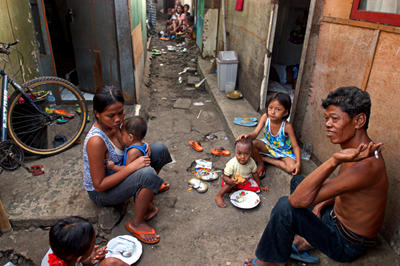Indonesia has reserves well above USD 100 billion and its debt-to-GDP ratio is below 30 per cent. These figures were applauded by rating agencies R&I and S&P, and other observers such as McKinsey and Foreign Policy.
Then comes the not-so-rosy picture. Two issues again surfaced in Indonesia’s political economy during 2012 and are likely to carry through to 2013: rising inequality and the ballooning subsidy for fuel consumption.
Analysis using the Gini ratio, a commonly used measure of inequality, shows that all provinces in Indonesia experienced worsening inequality in 2011 compared to 2009 and 2007. And it is the richer provinces — such as East Kalimantan, Jakarta, Riau and Kepulauan Riau — that have high, if not the highest, income inequality across provinces. They have high per capita income and relatively low poverty, yet inequality has increased. In provinces like Papua and West Papua, which are relatively rich compared to the Indonesian average, the picture is arguably worse: both exhibit poor Gini ratios and very high poverty — a combination that implies a very skewed income distribution. On the national level, the Gini ratio has increased from 0.35 in 2009 to 0.41 in 2011. While this is slightly better than China (0.44) or Malaysia (0.46), it shows that Indonesia once had a better distribution of income than it does today, although the number of people in poverty has declined from 14.2 per cent of the population in 2009 to 12.5 per cent in 2011. Wealth is unevenly distributed across regions, too: Indonesia’s per capita income rose to US$3,000 in 2010, but in some regions the average is closer to US$10,000.
The other major concern is the long-debated fuel subsidy. Early in 2012 the government failed to cut the large subsidy following a dramatic defeat in parliament. The 2013 budget will see a more than US$6 billion increase in the subsidy to US$20 billion — or 2.1 per cent of GDP. This dwarfs the subsidy allocated for other sectors, such as food and public infrastructure.
The government has acknowledged the importance of infrastructure financing, but only allocated US$22 billion, or 2.2 per cent of GDP, to infrastructure in 2013, despite a target of at least 4–5 per cent of GDP. In an ideal world, the government would reallocate the money saved from a lower fuel subsidy into infrastructure development. But in the absence of any reallocation, the government should invite the private sector to participate in nation building. Cooperation with the private sector would be a big policy challenge, but could provide rewards, such as good public–private partnership schemes and a better investment climate.
The two issues — inequality and the fuel subsidy — are actually quite closely related. The National Socio-Economic Survey revealed households whose income is in the top 25 per cent enjoy 77 per cent of Indonesia’s fuel subsidy, while those in the bottom 25 per cent only receive 15 per cent of the subsidy. Worse yet, less than 2 per cent of the subsidy goes to the bottom 10 per cent.
There is also an indirect connection, because the money spent on the inequitable fuel subsidy is effectively money taken away from much-needed infrastructure. A critical lack of road and port infrastructure is the main reason why it is difficult to travel to and from different regions in Indonesia. That difficulty means different provinces develop at different speeds, and this is a driver of inequality.
Inequality and the fuel subsidy will not be the only issues in Indonesian economic discourse entering 2013. The country is set for a tense political period as it approaches an election year in 2014. It is likely that policies perceived as ‘non-populist’ by the public at large will be very hard to sell. These include not only a fuel subsidy reduction, but also other sensitive issues, such as the resolution of labour disputes.
As the election approaches, populist policies are again on the rise, especially in the areas of trade and investment. One of the most recent examples was the controversial disbandment of the national oil and gas regulator (BPMigas) by the Constitutional Court in response to appeals by several individuals and organisations, who deemed BPMigas to be ‘pro-foreign’. While the president himself guaranteed that the ruling would not jeopardise existing commercial agreements, it has made doing business in Indonesia much more uncertain.
Still, despite all these issues, Indonesia enters 2013 with strong macroeconomic foundations. The challenge is whether it can build upon them.
Arianto A. Patunru is a Fellow at the Indonesia Project, Arndt-Corden Department of Economics, the Australian National University.
This is part of a special feature: 2012 in review and the year ahead.

